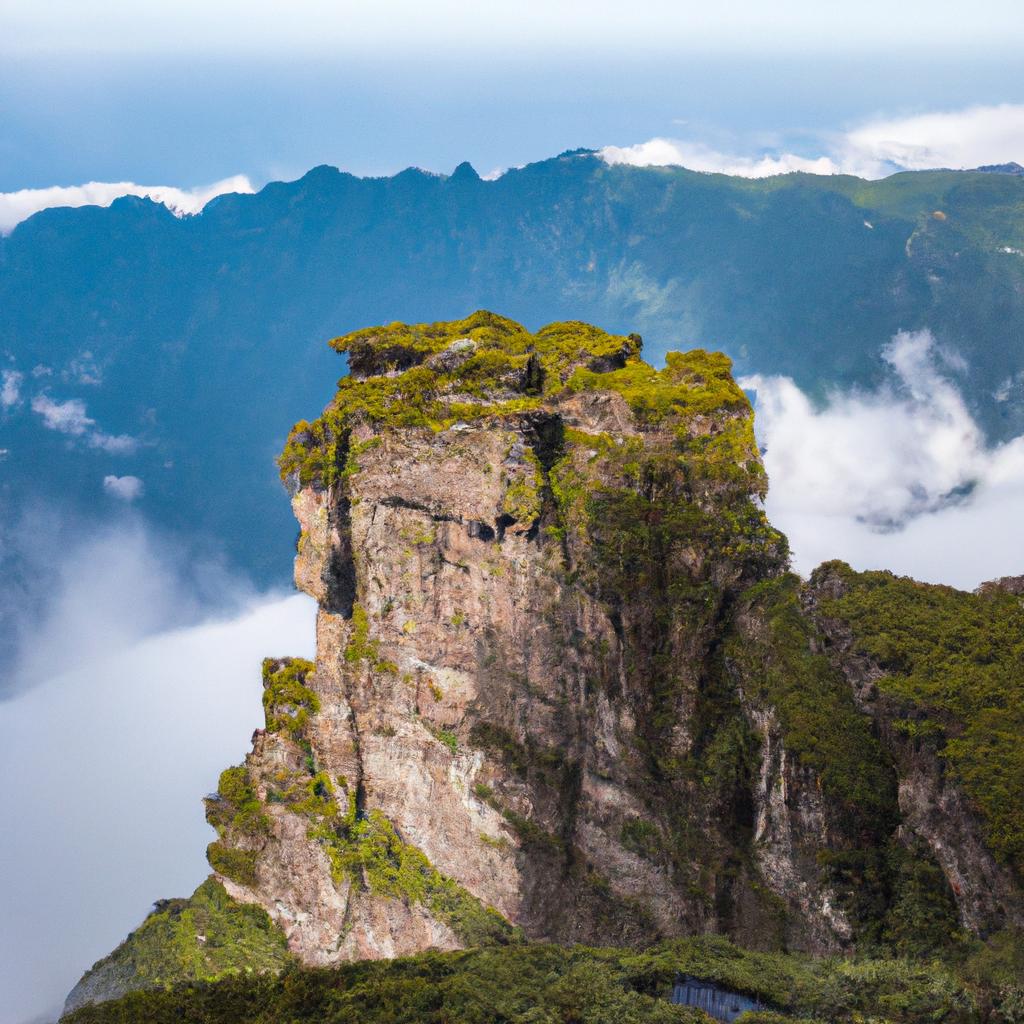Nestled in the remote region of southwestern China, Fanjing Mountain awaits adventurers seeking a captivating blend of natural wonders and cultural treasures. Situated in the Wuling Mountain Range, this UNESCO World Heritage Site and National Nature Reserve boasts breathtaking topography, unparalleled biodiversity, and a rich historical significance. Join us as we delve into the geographical features, historical significance, unique biodiversity, and must-visit attractions that make Fanjing Mountain a destination you won’t want to miss.
Geographical Information
Fanjing Mountain, located in Tongren City, Guizhou Province, China, dominates the landscape as part of the Wuling Mountain Range. With an elevation of 2,570 meters and an expanse of approximately 400 square kilometers, the mountain presents an awe-inspiring sight. Its terrain is characterized by steep cliffs, deep valleys, rugged peaks, and the enchanting presence of waterfalls, streams, and lakes. These natural features contribute to the mountain’s undeniable charm.
The climate of Fanjing Mountain is subtropical, with an average annual temperature of 12°C. The best time to visit is during the mild and picturesque seasons of spring and autumn when the mountain is resplendent in its full glory. However, be prepared for sudden weather changes, as fog and mist can enhance its mystical atmosphere.
Historical Significance
Fanjing Mountain’s rich history spans over 1,200 years. It was first inhabited by the Miao people, an ethnic minority in China with a centuries-old heritage. In the 8th century, the mountain gained religious significance when the Buddhist monk Jianzhen established a temple there. This marked the beginning of Fanjing Mountain’s spiritual allure. Over time, more temples were constructed, attracting pilgrims and travelers who sought solace and inspiration amidst its natural splendor.
Beyond its religious importance, Fanjing Mountain played a pivotal role in shaping Chinese culture. It has inspired countless poems, paintings, and artistic expressions, symbolizing the nation’s innate beauty and cultural heritage.
Biodiversity
Fanjing Mountain’s high elevation and diverse topography create an ideal habitat for a remarkable array of flora and fauna. Within its bounds, one can find over 2,000 plant species, including rare and endemic specimens such as the Fanjing Fir and Guizhou Hemlock. Additionally, the mountain shelters over 4,000 animal species, some of which are endangered or rare, including the Golden Monkey, Chinese Giant Salamander, and Chinese Serow.
Recognizing its significance as a biodiversity hotspot, Fanjing Mountain was designated as a UNESCO Biosphere Reserve in 2018. Efforts to safeguard its unique ecosystem have been implemented, including limiting visitor numbers and promoting sustainable tourism practices. These initiatives ensure the preservation of Fanjing Mountain’s natural beauty for generations to come.
Tourist Attractions
Fanjing Mountain offers an abundance of attractions catering to diverse interests. Here are some notable spots you won’t want to miss:
Scenic Spots
- Red Clouds Golden Summit: Reach the summit for panoramic views of Fanjing Mountain’s surroundings and visit the Red Clouds Temple, a Taoist temple dating back to the Tang Dynasty.
- Natural Bridge: Feast your eyes upon a natural rock formation that spans a deep gorge, providing stunning vistas of the neighboring mountains and valleys.
- Tenglong Cave: Explore this mesmerizing limestone cave system adorned with impressive stalactites and stalagmites, traversable by foot or boat.
Activities
- Hiking: Embark on one of the mountain’s hiking trails, tailored to varying skill levels. The Summit Trail, leading to the Red Clouds Golden Summit, is a favorite.
- Wildlife Watching: Join guided tours to observe and appreciate the rare wildlife residing in Fanjing Mountain, such as the Guizhou snub-nosed monkey, in their natural habitat.
- Cultural Tours: Immerse yourself in the mountain’s rich cultural heritage by exploring the numerous temples and shrines scattered throughout.
Accommodation
Fanjing Mountain provides several accommodation options to suit different budgets and preferences. Choose from a range of hotels and guesthouses situated at the mountain’s base or enjoy a more immersive experience by staying in a local village. Popular choices include the Fanjing Mountain Hotel, the Fanjing Mountain International Youth Hostel, and the Jiaxiu Inn.
Conclusion
In conclusion, Fanjing Mountain encapsulates a world of wonder, appealing to nature enthusiasts, hikers, and those seeking cultural enlightenment. Its mesmerizing topography, diverse biodiversity, and profound historical significance position it among China’s most extraordinary natural and cultural treasures. TooLacks encourages everyone to embark on a journey to Fanjing Mountain and bask in the splendor of this hidden gem.



